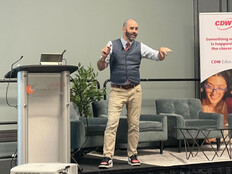Transforming Students into Citizen Journalists
Citizen journalism has become a worldwide phenomenon thanks, in large part, to the merging of mobile devices and connective Web 2.0 technologies. These tools empower average citizens to bring attention to what might otherwise be unreported (or underreported) events, often promoting national dialogue and sometimes even affecting the outcome of events.
The Arab Spring of late 2010 and 2011 and the Occupy movement against economic and social inequality that arose in the United States in September 2011 are just two examples of how citizen journalism can shape our world. As Facebook pages, Twitter feeds, YouTube accounts, blogs and other Web 2.0 applications continue to supplant more traditional communication methods, it will become increasingly important for mobile device–carrying citizens to understand how these tools work if they wish to be part of the news cycle.
Lesson Description
This lesson will empower students to become citizen journalists by using tools with which they are already comfortable.
Begin by polling students to determine which social media tools they already use and which students use them. Rather than focusing on a specific tool, consider instead how each tool can be leveraged for maximum effect.
After identifying the blog, Twitter, Facebook and Livestream mavens in the classroom, engage students in a discussion about how information spreads via participatory media and how that trajectory differs from traditional media. Also, show students how they can use web analytics tools such as Retweet Rank, Google Analytics and YouTube Insight to track how many visits their posts get and the source of their visitors.
Next, tell students that they are going to cover an event as citizen journalists and that their goal is to reach as broad an audience as possible. Give them 10 minutes to coordinate either in small groups or as a class how they are going to achieve this. Students also should divvy up reporting tasks to maximize exposure and identify the tags and hashtags they will associate with their reports.
The next step is to stage an event for students to cover. It could be an authentic event already happening on campus, such as an athletic competition or cultural activity, or it could be a guest speaker who visits the classroom. Better yet, identify an issue of concern to local residents and have students cover it by polling citizens and conducting interviews with the issue’s key players. Regardless of the type of event you choose, convey to students that their job as citizen journalists is to capture and report what they see, hear and learn from the event.
After the event is over, dedicate class time to analyze the impact and reach of students’ posts and to reflect in writing on what occurred.
Subject Area
This lesson focuses on journalism and technology subject matter, but it could be team-taught as an interdisciplinary unit. Because the terms of service for most social media tools require users to be at least 14 years old, this lesson is only appropriate for students age 14 and up.
Curriculum Standards
This lesson addresses several of the International Society for Technology in Education’s National Educational Technology Standards for Students (NETS•S), Teachers (NETS•T) and Administrators (NETS•A). These standards challenge:
- students to use digital media and environments to communicate and work collaboratively, including at a distance, to support individual learning and contribute to the learning of others (NETS•S 2);
- students to understand human, cultural and societal issues related to technology and practice legal and ethical behavior (NETS•S 5);
- teachers to design, develop and evaluate authentic learning experiences and assessments incorporating contemporary tools and resources to maximize content learning in context and to develop the knowledge, skills and attitudes identified in the NETS•S (NETS•T 2);
- teachers to exhibit knowledge, skills and work processes representative of an innovative professional in a global and digital society (NETS•T 3);
- administrators to inspire and lead the development and implementation of a shared vision for comprehensive integration of technology to promote excellence and support transformation throughout the organization (NETS•A 1); and
- administrators to model and facilitate understanding of the social, ethical and legal issues and responsibilities related to an evolving digital culture (NETS•A 5).
Resources
- “The Fix Is In: Social Mobilization and School Reform” wiki: the-fix-is-in.wikispaces.com
- The Digital Backpack directory of Web 2.0 tools: goodhue.k12.mn.us/school242/genie224/images/files/backpack2010.html
- The EDUCAUSE Learning Initiative’s “7 Things You Should Know About Citizen Journalism”: http://net.educause.edu/ir/library/pdf/ELI7031.pdf
Grading Rubric
Grades can hinder students’ intrinsic motivation and impede learning by turning school into a game they play in order to receive artificial rewards. For this activity in particular, it’s impossible to establish a fair grading system, because neither the teacher nor the student can control the events to be covered (nor whether he or she will be in a situation to act as a citizen journalist).
If you must assign grades, base them on the quality (breadth and depth) of each student’s post-event reflections. That way, students aren’t earning higher or lower grades based on factors beyond their control.
Teaching Tips
- Many schools’ acceptable-use policies still reflect a fear of Web 2.0 and social media tools, so be sure to check yours before proceeding. If you can’t secure permission from administrators to have students use social media tools in your classroom, encourage them to be quietly subversive outside of the classroom instead.
- Age restrictions among the different social media tools vary, so review each tool’s terms of service before asking students to sign up for an account.
- Engaging students with participatory media often can produce unexpected learning situations, so be on the lookout for these “teachable moments.” Don’t be afraid to abandon your regular lesson plans in exchange for authentic learning.
- You never know what background knowledge and skills your students will bring to the classroom, so be flexible. When possible, let them teach you.








